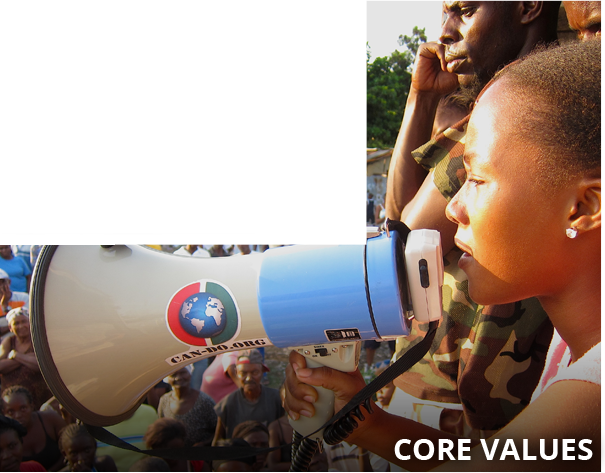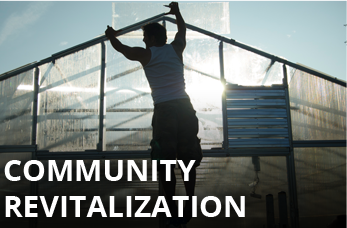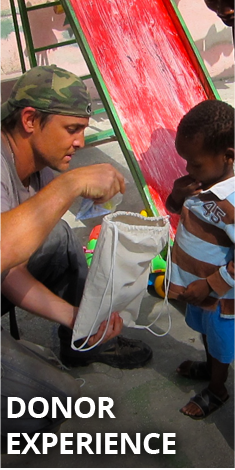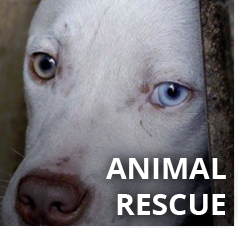CAN-DO, TSUNAMI RELIEF- SRI LANKA
We arrived in Colombo, Sri Lanka February 7th, 2005. After speaking with a bellman from our hotel and listening to his story of his village, Mahamodara, we decided to start there. He explained how the AID had yet to reach his village or the region for that matter. As we drove along the coast, making our way to Mahamodara, we witnessed the destruction first hand. We made it a point to stop off at random villages recording there stories and trying to get some insight into what kind of AID, they were receiving. It was tough to see how hard these people were suffering with no real solution in site. The stories and destruction worsened the closer we got to our destination. Once we arrived we surveyed the area and went to work.
Mahamodara Village:
We first set up a data-base and began collecting names, occupation, number people in the family, needs etc…
CAN-DO’s Home Base
We started on Sanitation. We first began clearing drainage canals that became blocked with debris. Most all the canals in and around Galle were blocked.
We also went to work on the four stagnant cesspools in the village that were diseased and becoming over-run with flies&mosquitoes.
Coastal Clean-up- We rented bulldozers and trucks and begin clearing the unsafe structures and debris along the coastline.
Total cost per-day- one bulldozer and one larger truck= $130.
We cleared over a one mile strip of coast line in less than a month.
COST:Under $3,000.
We used the debris from the coastline to fill in and kill the disease in the cesspools.
Cesspools- Before&After.
Cesspools cleared in less than two weeks
COST: $800.
Dug out temporary septic tanks.
COST: Less than $100. dug out & installed.
We were careful in compiling our data to make sure we were not duplicating other relief work. Once we had an idea of what we needed, we would rent trucks for about five dollars per trip- fill it with supplies using our list as a guide. A person can fill one large truck with supplies for a village with around 350 families.
COST: $2,500. Truck transport- Less than $10. per-trip.
I was amazed at the number of tsunami survivors that had still not seen any real AID in over two months. We distributed the kits orderly and fairly. Kits contained everything to- basic eating and cooking utensils, pots, pans, cups, plates, pillows, small stoves, milk, mosquito nets, coconut scrapers, etc…
On this day we handed out more than 45 pairs of eyeglasses. Optometrist exams were arranged and paid for ahead of time. Villagers could go in for an exam, at their convenience. We would then go collect the glasses, once they were ready, and distribute them accordingly.Optometrist exam and eyeglasses-
COST: $15.00 per person.
We also organized Art Programs for the kids. We will be offering calendars that will be sold on our site with ALL of the money going to the different villages from where they were created.
COST: Art Supplies- Less than $200.
In the middle of Mahamodara village we built the village’s first playground. When we return, we hope to build a recreational center for the whole area, complete with a cricket and soccer field.
We met with the Mayor of Galle, Mayor Mahamed Ariff, on several occasions to get the OK before we went ahead with any type of construction. Mayor Ariff treated us very well and appreciated our help.
The Hospital:
On February 12th we visited the local hospital. We met with hospital administrators and went on several walk throughs and with the doctors, evaluated the conditions of the hospital. The hospital is less that 50 meter from the ocean and was severely damaged during the tsunami. Five majors wings of the hospital were wiped out and have to be knocked down, including the Labor Ward, Maternity Ward and blood bank. Three Caesarean procedures were being preformed, and were carried out in this hospital at the time the tsunami was tearing through it. . For a facility, that when running normally, handles up to a hundred pregnancies a day, were now down to nine a day. Pregnant women were forced into a nearby overcrowded hospital which is not equipped to care for that many women. When we left pregnant women were just starting to return. Still the hospital is in desperate need of much needed supplies. We did provided them with some necessary equipment but would like to focus more on the hospital in the future.
The Well:
On March 5th we started construction on a 300 year old traditional bathing well used for generations by villagers as a place to gather. When we arrived in Mahamodara it was reduced to a 5 foot hole in the ground. After having the state of the well evaluated by a licensed ecologist, Gerry ( ) and worked on a game plan. Our thoughts were if we rebuild and bring back the spirt of the well,
then we could restore the spirit of the village. and it worked…
When we first arrived the well was reduced to about a 5 foot hole in the ground with a natural spring coming up from below. We pumped it out and dug it out to its natural foundation and with the help and support of the villagers we began rebuilding it from the ground up…
COST: $1800.
We built filters and used charcoal that we excavated from a sunken ship that went down over a hundred years ago off the coast of Galle to clean the water.
We finished construction on April 2/2005 at 3am in the morning- that next night we held the Opening Ceremony. Both the Major and the Monk were both in attendance.
Reads-
“We highly appreciate the great courage, keen interest and affection shown by the courageous sons of CAN-DO.ORG-USA to rebuild our ancient bathing well destroyed by the tsunami devastation”
Reads-
“OUR SALUTE TO THE CAN-DO.ORG for all the untiring services and moral courage rendered to us when in dire need. Displaced masses of Mahamodara.”
Dulip:
In the midst of everything I met a young survivor by the name of Dulip. Dulip is 24 year old tsunami survivor. Over two years ago he became very ill and was told by doctors that he had Meningitis and would never walk again. They also told him, that he had brain damage due to the incurable infection that had settled in his spine and that his condition was worsening by the day, leaving him with little hope and less than a year to live. One day after sitting and talking with Dulip, I noticed his toe twitch…
Dulip and I met on Feb.11/05.
We checked him into Apollo Hospital on March 2nd, he remained in for three weeks. We found that he had been misdiagnosed and had a serious infecting that was causing his paralysis. After one month of some of the best care offer in the world offered by Apollo hospital, who had graciously reduced his bill by 70%.
He was given the necessary medication and put on a rehab two times a day.
COST: Three week hospital stay/Rehab/ Under $1000.
While Dulip was admitted into the hospital we rebuilt his house, with the help of Simon & Michael, from Germany. Dulip’s father also built parallel bars so he could continue his rehab from home.
COST: $350
Before Dulip got his new leg braces his father made him this pair out of scrap metal.
Dulip’s home rehab.
Dulip learns how to stand again and painfully takes his first steps just 4 weeks after being released from the hospital…
We found an “old school” gym where Dulip began building back the strength in his legs…it was an unbeilevable sight!
Although, still somewhat reliant on his wheelchair, Dulip is improving everyday. He is now beginning to stand on his own and the “incurable” infection he was misdiagnosed with is now gone, thanks to the proper medication. He is continuing with his rehab and is now receiving accupunture treatments.
Dulip not only promises he will be walk soon but is also teaching English to the children in his village…two things he has always dreamed about…
We’ll keep you updated… (Check out Dulip’s video to see his full progression)
(We will soon have a “Wish List” page, where we will have villages, projects and individual stories- allowing people to donate directly to that project or person)
Pettiagallawatta Village:
February 14th we came across Pettiagallawatta, a small fishing village that was wiped in the tsunami, leaving over eighty eight families homeless and out of work.
We applied the same method we used in Mahamodara and began gathering data and assessing the needs of the villagers.
With the help of Cliff Sutherland, Gerry, Martrin and Conadsami we began clearing mountains of debris.
We then combined our resources and began buying much needed supplies, putting together kits and distributing them according to our lists. We also bought or repaired boats, engines, tuk tuk’s, bikes, fishing nets etc…
A problem faced by many of these fishing villages is that people come through and donate a boat, which is a very kind gesture, but then the villagers are still in need of nets, weights (to weigh down the nets), engine repair, etc… In this particular village, Gerry and I spent five thousand dollars and were able to supply the proper amount of nets to get the entire village back on there feet.
Kahwa Village:
When traveling back and forth from Galle to Colombo we would randomly stop at villages we became friendly with and compile lists of basic needs and supplies. We would drop off the supplies on the way back. We did this on a regular basis.
On February 20th I had the privilege and honor of meeting Former President Bill Clinton in Weligama on his way to Martra. Clinton along with former President George Bush, were there to assess damage caused by the Tsunami disaster and to explore opportunities in Sri Lanka for rehabilitation and reconstruction efforts. President Clinton is playing a big part in relief efforts all through out Asia and is doing a great job bringing much needed attention not only to the small island of Sri Lanka but all tsunami affect areas- a problem that has been somewhat overlooked by the international media. Thanks Mr Clinton-keep it up!
Dellawatta village:
March 11th I was introduced to Dellawatta village, AKA Jungle Road. We were brought there by a small private construction team from Ireland that had been working out of this village for about three weeks rebuilding homes. They were heading back to Ireland and asked if we would take over their relief efforts after they left. Dellawatta is a small (very poor) jungle village located in Unawatuana. Because of their location, they receive NO AID. This is a problem. Although, there are many villages that were not hit by the tsunami, they are still very much effected by the outcome. Not only was their livelihood destroyed but these village become refugee camps for family members that once lived by the shore.
COST: Gas tanks/Gas & Stoves 35 families- $1,432.
Johnny’s:
We would often times take on individual projects… Helping regenerate small businesses.
In this case, we helped a farther and son’s barber shop back on its feet. Thanks to Arthur Resnick, the owner of Boston Beauty, for suppling this father and son with two top of the line barber tool kits. I dedicated this barber shop (with the OK from the father and son) to my grandfather, Johnny Famico. He has been an “oldschool” barber for over 60years and still continues to cut hair today.
COST: Rent for 3 months $90. Mirrors, paint, barber chairs etc. -$400.
We increased the standard of living when and wherever we could…big or small.
To this day, in Sri Lanka, the tsunami victims are playing the “waiting game” (they want no part in), with no solution in sight to the newly installed “The 100 Meter Law” (also called the “Set-Back Zone”). This piece of brilliant legislature states that the people are NOT allowed to build or rebuild their homes within 100 meters of the ocean. While the “decision makers” sit by they are forced to live in tents that where designed for much cooler climates. With no ventilation the temperature inside these tents can reach over 130 degrees.
Families that refuse to pack themselves into small sweltering tents will wait it out in their destroyed homes or makeshift shacks.
The confusion and lack of attention to this problem has forced people to take action. On March 8th the people of Mahamodara protested…
The protest closed down the main road in Galle in both directions for more than two hours. From there we went to the District Secretariat Building to confront government officials.
The Protest made the front page and lead to much needed dialogue between the villagers and government officials.
After six months, as people around the world remember the tsunami disaster, many of the tsunami survivors are still awaiting AID…















